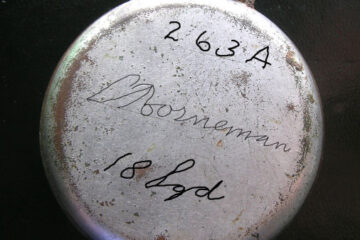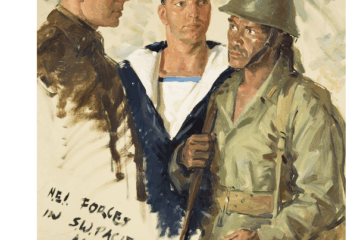Not enough personnel to start a new Squadron
The pre-capitulation situation in the Netherlands Indies was chaotic and the stubborn Dutch Government-in-Exile in London had no vision nor a plan fort an inevitable post surrender period. This was the main course why so few military people and material was saved to prepare for the reoccupation of the Dutch colony. This also applied to its fighter planes, none of them were able to flee to Australia and those that had survived the battles trying to stop the Japanese were destroyed so they couldn’t be used by the Japanese. While mainly by shear lick bomber planes and at least a limited staff was able to start the 18 NEI Squadron RAAF, establishing a fighter squadron took over 18 months. By that time the Netherlands East Indies Flying School, which was established in March 1942 in Jackson, Mississippi, was able to deliver enough staff to set up a new squadron. The Americans had indicated that only when the Dutch were able to deliver enough personnel they were willing to make fighter planes available to them.
The fresh crews underwent further training on their arrival in Australia in Canberra and Mildura.
Formation of the new Squadron
The No. 120 (Netherlands East Indies) Squadron RAAF was formed at RAAF base Fairbairn in Canberra on 10 December 1943. As a joint Australian-Dutch fighter unit, the Dutch authorities provided all the squadron’s aircrew and aircraft while the RAAF provided its ground crew. This arrangement had been previously used for No. 18 (NEI) Squadron and the short-lived No. 119 (NEI) Squadron. It was originally intended that once formed, No. 120 (NEI) Squadron would be deployed to northern Australia and operate alongside No. 18 (NEI) Squadron. However, it was later decided to deploy the unit to Merauke on the south coast of Netherlands New Guinea (NNG), which formed part of the pre-war Netherlands East Indies (NEI). The Squadron was led by Major H.A. Maurenbrecher.

The squadron started with Kitty Hawks and when it reached its full strength at the end of January 1944 it had 24 fighter planes. It had 27 officers, 18 non-commissioned officers, 28 corporals and air crew staff, 5 RAAF officers and 229 ‘other ranks’.
That month the Australian Army began to plan an offensive along New Guinea’s south coast using elements of Merauke Force. In keeping with this more active role Merauke Force Headquarters was renamed Headquarters 11th Brigade. The 2/9th Field Artillery Regiment had arrived at Merauke in March 1944, soon to be followed by the 120 Squadron. However this was delayed as both the 18 and the 120 Squadrons were also involved in the Western Australian Emergency in March 1944.
On 5 or 6 april 1944 two P-40N Kittyhawks of the120 Squadron were flying from Potshot (Learmonth) to Canberra and they lost their way. Both pilots took to their parachutes and the P-40´s crashed near Mildura. A/c numbers: C3-524 and C3-527. Pilots: 2nd Lt. A.J. Geerts and Sgt. J.D. Brameyer.
The move from Canberra to Merauke took place in April, with the last transports arriving on May 7.
Below is the list of air crew of the 120 Squadron (excuses for the upside down presentation of the file).
Operational at Merauke, Netherlands New Guinea – June 1944
The squadron belonged to the North-Eastern Area of the Southwest Pacific Area that stood under the command of General MacArthur. The Squadron was tasked with guarding the Torres Strait so that Japanese ships could not sail from the Arafura Sea to the Coral Sea. It also had the task of intercepting, both by day and by night, Japanese aircraft that either wanted to bomb Merauke or were on their way to the Australian mainland. The third part of their mission was reconnaissance to the north and west of New Guinea and to target Japanese posts on the coast.
Its first operation was launched on June 27, 1944. Four sorties were flown for an armed reconnaissance and four P-40s, led by Major Maurenbrecher, carried out a bombing and strafing raid in cooperation with Australian infantry units. On July 5, 1944, a second operational mission was carried out. Operations order MER/88 ordered six aircraft to attack the Japero site: each aircraft had two 500 lbs bombs with a delay of 8-11 seconds. The bombing was successful and at 07:15 local time the first bombs fell, dropped from a height of 300 feet. The attack was carried out in waves of three aircraft. The first casualty took place on 24 July, during a trainings flight.
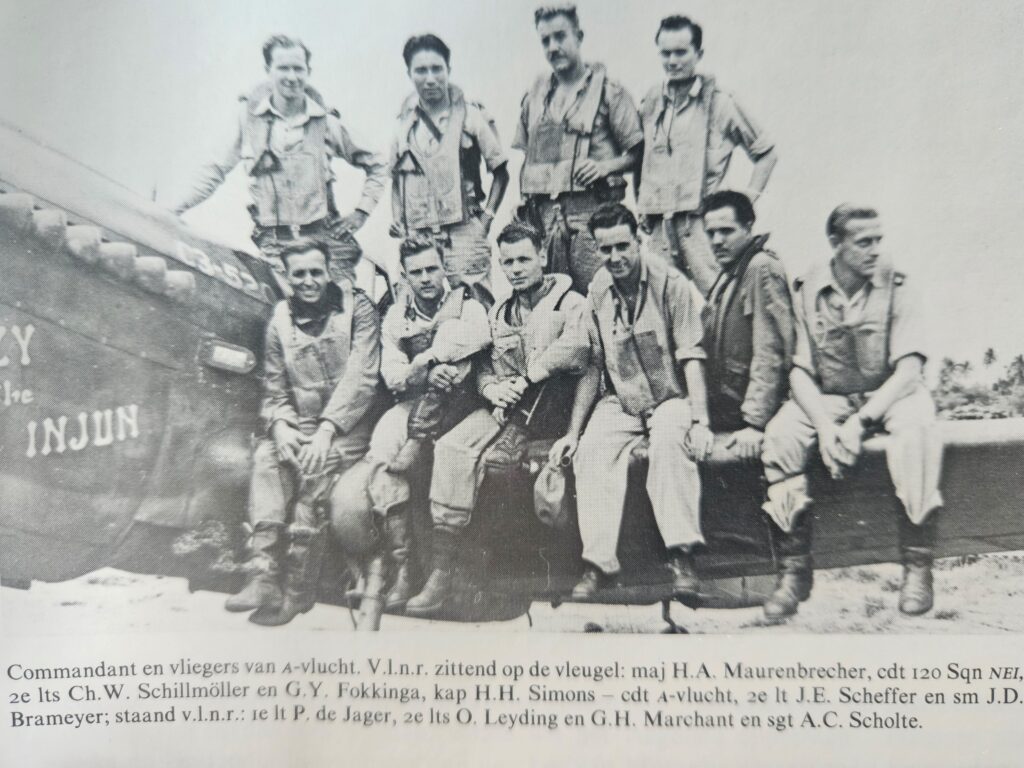
Due to the limited Japanese presence in the region, their missions were limited to strafing attacks on Japanese positions as well attacks on small craft off the coast of New Guinea. It also provided ground support from MacArthur’s invasion of NNG. Several aircraft were lost during these operations. While the other RAAF units at Merauke were redeployed in late 1944, No. 120 (NEI) Squadron remained in town.
However, the general complaint was that there was little to do for the airmen at Merauke. The daily visits of the courier flights of the 1 NEI Transport Department for General MacArthur were in general the highlight of the monotonous situation.
On 7 September 1944 the Squadron lost a C-47 belonging to NEI-AF transport squadron (VH-RDK) near Cairns (it flew into a mountain). They lost all crew (4), 7 fighter pilots of 120 Squadron on their way for R&R and a great number of RAAF personnel (including S/Ldr Dawson, RAAF-NEI liaison officer). Not until 1988 was the C-47 found in the rugged terrain near Cairns. I went to the ceremonial funeral the following year, as a reporter for Radio Veronica. Another interesting story evolved from here regarding one of the casualties Samuel Jacob and the White Australian Policy.
There were a rather large number of casualties that were not immediately in relation to the war operation. This further frustrated the Squadron. It was now on Dutch territory but was not allowed to be used to liberate other Dutch territories in the Netherlands east Indies. There was rather little to do in Merauke and the Dutchies wanted to participate in the war effort, either with the Americans in the north of NNG, or being allowed to fight in NEI.
Below is an amateur film made in 1944 by Mr. Hans Anton Maurenbrecher about fighter pilots of the 120 Squadron during their stay in Merauke in the Dutch East Indies. Images of the trip from Merauke to Hollandia. Source: Netherlands Ministry of Defence.
Post war operations
During May and June 1945, the 120 Squadron was moved to the island of Biak off the northern coast of Dutch New Guinea.
Following the end of the war, the squadron continued to fly surveillance and escort flights over northern New Guinea during September and October 1945. The Dutch wished to move No. 18 and No. 120 Squadrons to Java, however, and to facilitate this the RAAF element of the squadron was disbanded on 30 October 1945. The last RAAF personnel left the squadron in February 1946 and No. 120 Squadron was assigned to the Netherlands East Indies Air Force (NEIAF) on 20 June, thereby ending its relationship with the RAAF. The squadron retained its designation of No. 120 Squadron of the NEIF, and saw combat in the Indonesian National Revolution. It was disbanded on 1 March 1950 following the Dutch defeat. The unit was re-formed as 120 Squadron of the Royal Netherlands Air Force in 1961 as an air defence unit equipped with nuclear-tipped Nike-Hercules surface to air missiles and continued in this role until it was disbanded in1983.
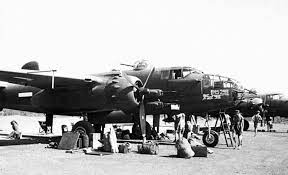
Late in the Second World War, Bundaberg was utilised by the Netherlands East Indies Air Force flying B-25 Mitchell bombers. The plan was to establish the 121 Netherlands East Indies Squadron RAAF, however this did not eventuate as the war ended before the squadron was officially formed.
Below are two pages from the magazine Kemajoran covering some of the history of the 120 Squadron. The main article on these pages is about the crash landing of a Catalina who – after the war (October 1945) – was delivering alcohol to the troops on the island of Biak, Dutch New Guinea. More information on that crash in the article of flight engineer Evert van Hummel.
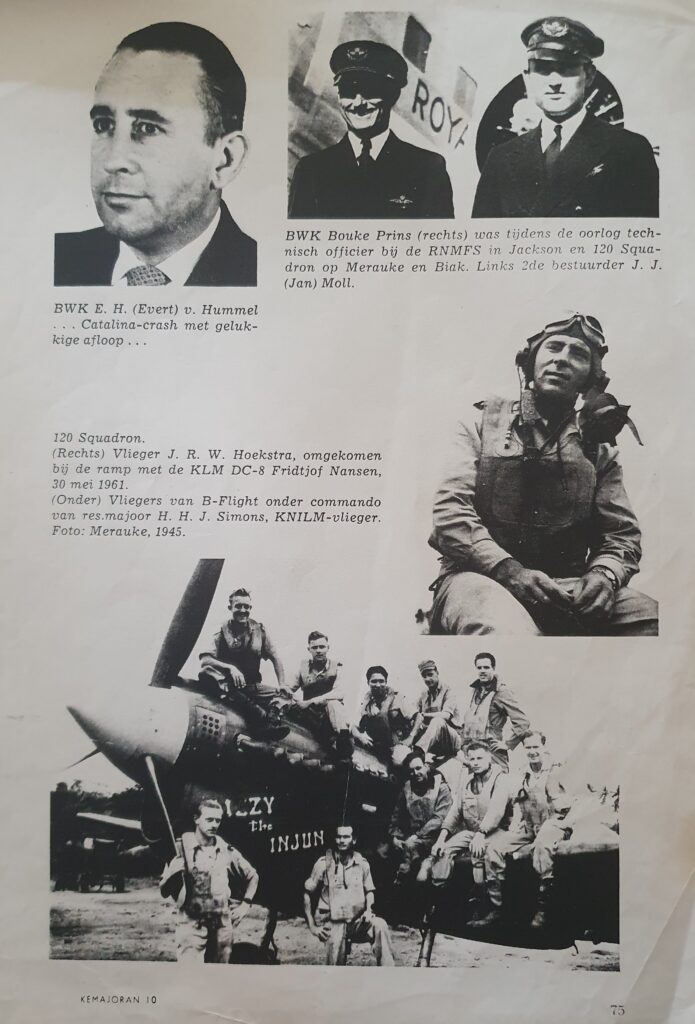
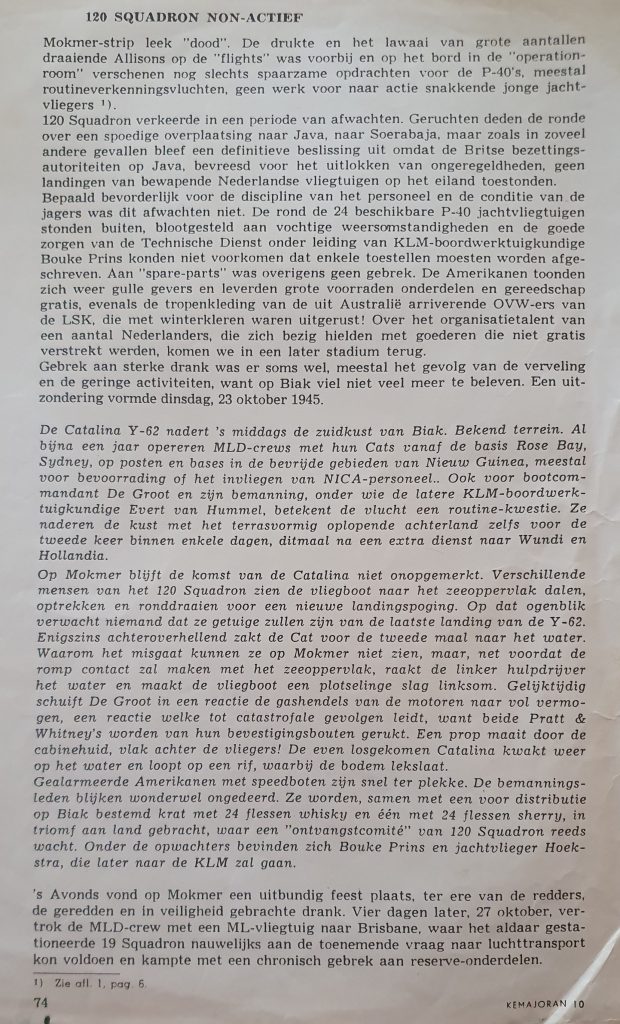

List of casualties
Below is a list of the casualties of the Air Force of the Royal Netherlands East Indies Army.
The Australian War Memorial also mentions Australian Flight Lieutenant Winnie Fraser (see below, photo Paul Budde, April 2024).

See also:
De Militaire Luchtvaart van het KNIL in de jaren 1942-1945 by O.G. Ward
Dirk Bodemeijer – Captain Technical Office 120 Squadron 1944/45
The following website also offers information on the Air Force of the Royal Netherlands East Indies Army. Key in Netherlands East Indies for an overview of available files.
